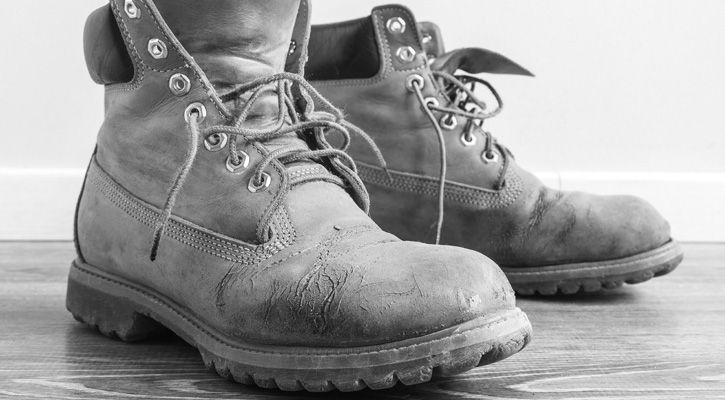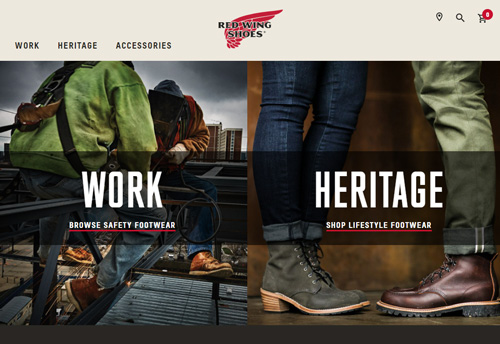
Choosing between Timberland and Red Wing boots can be tough since both brands have strong reputations for quality and style.
If durability is your top concern, Red Wing boots are often considered superior. Their craftsmanship is known for lasting through demanding jobs and tough conditions.
This makes them a great choice for rugged outdoor work and heavy-duty tasks.
When it comes to style and comfort, Timberland boots stand out. They are famous for their unique design, versatility, and comfort.
Timberland boots have a modern look that fits well with casual wear while still being functional. They are also known for features like waterproof protection, which is great for everyday use.
In weighing these options, consider what matters most to you. Are you looking for something that can withstand harsh conditions, or are you interested in a stylish and comfortable boot for daily wear? Each brand offers something unique, catering to different needs and preferences.
Brand History and Philosophy
The video will be loaded from YouTube.com, a third party. If you play it, you accept their terms of service, and their use of cookies.
Red Wing and Timberland each have unique origins and strong ideals. These brands have been making boots for years, building reputations for quality and durability.
Their roots and beliefs influence what makes their footwear stand out.
The Heritage of Red Wing
Established in 1905, Red Wing began in Minnesota with Charles Beckman at the helm. His goal was to make boots that could handle tough conditions, suitable for farmers and workers.
As time passed, these boots became known for quality and toughness. Red Wing Heritage, a part of the brand, honors this legacy, focusing on traditional designs and craftsmanship.
Red Wing is proud of its use of high-grade leather and careful handiwork, ensuring every pair is built to last. Each boot reflects a dedication to preserving the traditions started over a century ago.
The Timberland Journey
Timberland entered the scene in 1952 with Nathan Swartz in Massachusetts. Originally known as the “Abington Shoe Company,” it rebranded as Timberland in the 1970s. The brand became famous for its waterproof boots, a revolutionary concept at the time.
Timberland emphasizes innovation and sustainability, often using recycled materials and pushing eco-friendly practices.
Their boots are not just about performance but also about making less impact on the environment.
Timberland’s approach combines practicality with a focus on the future, continually aiming to improve product quality while reducing its footprint. This commitment to innovation and the environment makes Timberland stand out in the footwear industry.
Design and Style
The video will be loaded from YouTube.com, a third party. If you play it, you accept their terms of service, and their use of cookies.
Both Red Wing and Timberland are known for their distinct styles and design features. Red Wing is famous for its rugged and durable look, while Timberland offers a variety of designs from classic to modern.
Red Wing’s Aesthetic and Models
Red Wing boots are known for their durable designs and classic aesthetic. The Red Wing Iron Ranger is a standout model, featuring a sleek, rugged look with a signature cap toe.
These boots often use high-quality materials like Nubuck Leather, providing both style and durability.
Many Red Wing models, such as the Moc Toe, have a recognizable aesthetic. This includes visible stitching and a sturdy silhouette.
The boots tend to focus on functionality, which appeals to those seeking lasting wear and timeless style.
Red Wing offers boots that not only look good but perform well in different conditions. The sturdy build and iconic design make them a popular choice among workers and style enthusiasts alike. If you’re looking for boots with a classic, rugged appearance, Red Wing might be the perfect fit for you.
Timberland’s Design Variations
Timberland boots are famous for their versatile style and variety. The classic Timberland boot is known for its recognizable wheat color and padded collars. This design provides comfort and a distinctive look.
Beyond the classic design, Timberland offers various styles, including Suede and bold colors, making it easy to find a look that suits you.
Timberland often uses innovative materials, ensuring that their boots are both stylish and functional. The brand experiments with different textures and shades, making their boots an appealing choice for those who love fashion.
Their designs range from trendy to traditional, with some models focusing on modern aesthetics while maintaining high quality and wearability. With so many options, Timberland boots allow you to express your style without sacrificing comfort.
Material Quality and Durability
When comparing Timberland and Red Wing boots, you will want to consider the materials used and their durability. Both brands use high-quality leather, but their construction techniques also play a critical role in the longevity of the boots.

Leather Types and Treatment
Timberland often uses premium waterproof leather, which helps in wet conditions. This leather is treated to resist water, ensuring that it can handle rainy days without getting damaged.
Red Wing is known for using full-grain leather. This type of leather is strong and durable, providing a firm texture and classic look. It ages well, developing a unique patina over time.
Both brands prioritize high-quality materials, but the treatment and type of leather are essential factors in how the boots feel and wear over time.
Construction Techniques
Construction is a significant factor in the durability of footwear.
Timberland often uses glued construction methods, focusing on waterproofing and lightweight designs. This approach is suitable for casual use and offers flexibility.
In contrast, Red Wing boots frequently use Goodyear welt construction. This technique involves stitching the upper, insole, and midsole together, creating a robust and long-lasting bond.
Goodyear welt construction offers excellent re-soling capabilities, extending the life of the boots.
Timberland’s approach might be more appropriate for those prioritizing water resistance and comfort, while Red Wing targets durability and traditional craftsmanship.
Comfort and Functionality
When comparing Timberland and Red Wing boots, comfort and functionality take center stage. These brands focus on enhancing fit, comfort features, and their suitability for a variety of activities.

Fit and Comfort Features
Timberland boots prioritize comfort with features like padded collars and anti-fatigue technology, designed to provide support during long wear. The built-in shock absorption helps reduce foot strain, making them suitable for everyday use.
Red Wing boots, on the other hand, emphasize durability with a snug fit that adapts over time. Their boots often feature Vibram outsoles and quality leather, aiming for a balance between comfort and lasting wear.
Initial stiffness might be noticeable, but they become more comfortable as they break in.
Suitability for Work and Outdoor Activities
Both brands offer designs tailored for work and outdoor use but with different focuses.
Timberland boots are often waterproof or water-resistant, ideal for wet conditions. They are usually lightweight, making them easier to wear for extended periods outdoors or on construction sites.
Red Wing boots are crafted for tough environments, offering robust rubber outsoles and sometimes insulation for colder climates. They are well-suited for industrial work or hiking, providing solid foot protection and traction on various terrains.
Their hardy construction is built to withstand demanding conditions with long-lasting reliability.
Pricing and Value
When comparing Timberland and Red Wing Boots, price and long-term value are important factors. Both brands offer quality with different investment costs and long-term benefits.
Investment Costs
Timberland and Red Wing boots differ in price based on style and features.
Timberland boots typically range from $100 to $250, making them a popular choice for those seeking affordability with quality.
In contrast, Red Wing boots generally cost between $250 and $400. This higher price reflects premium craftsmanship and materials. If you are interested in a steel toe, be prepared to spend a bit more for added safety.
When making a purchase, consider what works best for your budget and needs. While Timberland offers great value for everyday use, Red Wing provides durability for demanding environments.
Long-Term Value Proposition
Durability is a key factor when considering long-term value.
Red Wing boots are known for their superior craftsmanship and quality materials, offering long-lasting wear.
Investing in Red Wing may mean fewer replacements over time.
Timberland boots, while less expensive, are also well-made. They offer good quality and value, suitable for moderate use.
If you need boots for occasional or lighter tasks, these can be an excellent choice.
Assess your usage needs: heavy-duty wear may justify the cost of Red Wing, while lighter use could make Timberland a smart option.
Choose based on how you plan to use your boots for the best long-term satisfaction.
